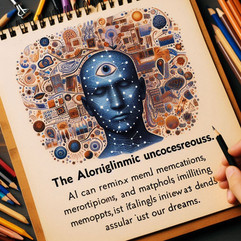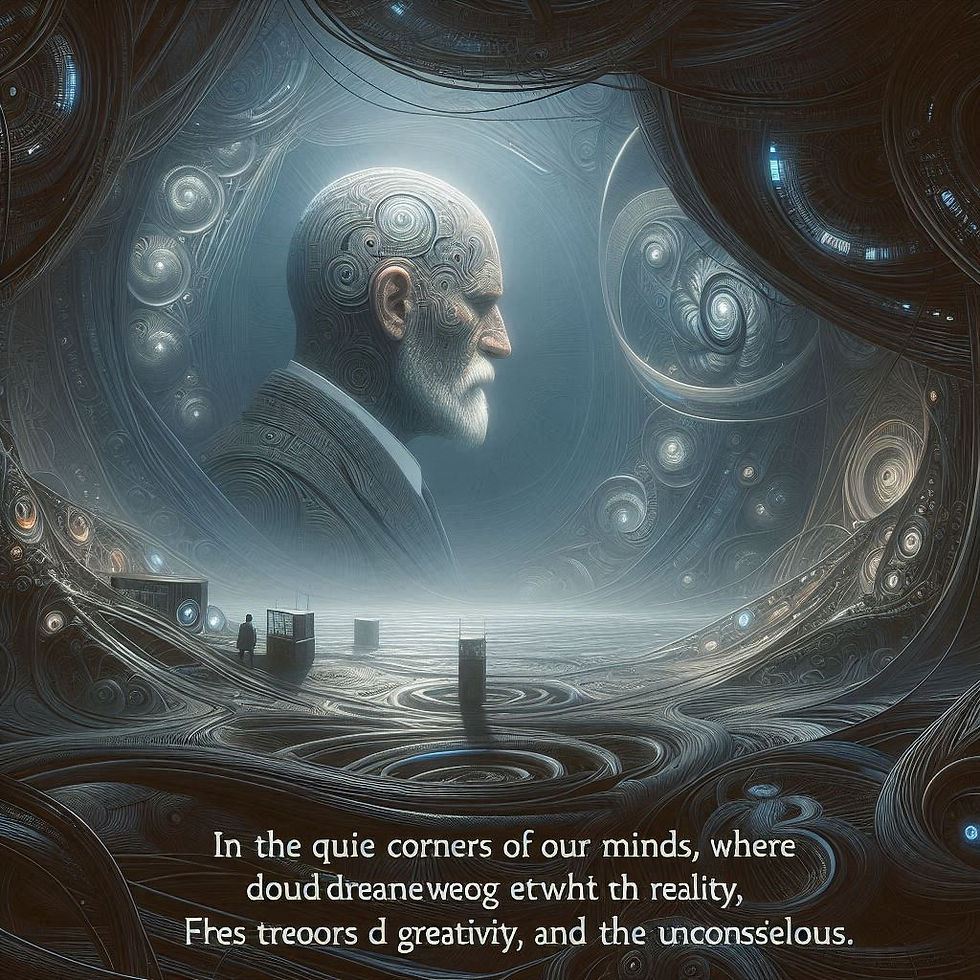Reimagining Don Quijote: Creative Illusions and Insights in the Age of AI
- Franco Arteseros
- Aug 12
- 4 min read
In the lively streets of Madrid, a timeworn copy of Don Quijote captivated Franco, an artist and thinker seeking inspiration. The illustrated pages, rich with history and creativity, became a gateway for exploring the complex relationship between imagination and reality. This theme resonates strongly in today’s age of artificial intelligence, prompting a profound reflection on how we create and perceive art.
Flipping through the weathered pages, Franco thought of Don Quijote, the iconic dreamer who valiantly charged at windmills, mistaking them for giants. This act is not just a story of folly; it offers deep insights about the creative journey. In a world increasingly influenced by AI, Cervantes' lessons take on fresh significance. They illuminate the tension between fantasy and truth, creativity and despair.

The Dreamer and His Quest

Don Quijote represents the urge to defy reality’s constraints. His adventures, propelled by an unyielding imagination, challenge us to reflect on our own creative paths. In a society where algorithms dictate much of our daily lives, creative expression can feel like an uphill battle. Yet, like Quijote, modern creators must balance ambition with practicality.

Each adventure is an opportunity to push back against conformity. When Quijote tilts at windmills, he is not merely being foolish; he symbolizes the inherent struggle to redefine our understanding of existence. Consider how many artists today—whether musicians, writers, or digital creators—take risks similar to Quijote, pursuing projects that may seem unrealistic on paper but hold deep personal meaning.
Sancho Panza: The Loyal Companion

Sancho Panza is much more than a sidekick; he represents the role of AI in our creative lives. As Don Quijote's steadfast companion, Sancho often grounds him with a practical perspective. Similarly, AI tools—ranging from writing assistants to design software—serve as partners in creativity, helping to turn fleeting thoughts into concrete forms.

Just as Sancho provides wisdom amid Quijote’s grand illusions, AI offers insights that can redirect and enhance the creative process. A study from the University of California found that creators who incorporate AI tools can boost their productivity by up to 40%. This data highlights how effectively engaging with technology can transform our art-making endeavors. The dynamic between Quijote and Sancho serves as a reminder of the potential benefits of collaboration between human intuition and technological assistance.
AI Hallucinations: Modern Windmills

In the context of AI, "hallucinations" refer to the instances when these systems misinterpret or incorrectly render data. These instances can lead to unexpected—and sometimes beautiful—outputs. Just like the windmills in Quijote’s adventures serve as a canvas for his imagination, AI's misfires can provide surprising artistic opportunities.
For example, an artist who utilizes AI tools to generate images may find that a mismatch between the intended and produced artwork inspires a new direction in their project. Embracing these modern windmills, although frustrating at times, allows artists to find meaning in surprises, reminding us that flawed creations can resonate powerfully with audiences.
The Algorithmic Unconscious

Examining the ties between creativity and AI, we encounter the idea of the "algorithmic unconscious." This concept proposes that AI can remix memories, emotions, and metaphors just as our dreams do. By accessing vast datasets, AI generates outputs that reflect diverse cultural narratives, mingling various influences in a way that feels familiar yet distinct.

Cervantes exemplified this creative remixing through innovative narrative techniques, such as breaking the fourth wall and blending genres. Today’s artists are increasingly challenged to reconsider authorship in a world replete with AI-generated content. This blending of human experience and machine-generated ideas encourages a deeper exploration of how our personal stories shape our creations.
Cervantes: The Original Remix Artist

Cervantes’ brilliance lies not just in storytelling but also in his ability to blend genres and defy literary boundaries. His timeless work delivers insights relevant to the digital age, where AI can produce text, art, and music. With AI's growing capabilities, questions about what it means to be an artist become increasingly pressing.
As Franco contemplated his illustrated copy of Don Quijote, it struck him that Cervantes positioned himself as a pioneer of the creative process, seamlessly mixing reality and fiction. This legacy urges today’s creators to expand their exploration of art, experimenting with new mediums and utilizing the advanced tools technology offers.

Freud, Fantasy, and the Digital Unconscious

The philosophical implications of creativity intersect with psychology, particularly through Freud’s theories on the unconscious mind. Just as dreams unveil suppressed desires, AI-generated outputs can reflect societal sentiments, remixing cultural narratives.
This understanding broadens the concept of the digital unconscious as a space for artists to explore and reflect on their own inspirations. Engaging with these themes allows artists to confront the illusions guiding their creative visions, using AI as a means for self-discovery. This ongoing conversation between humans and machines enriches the creative process, enhancing our appreciation of artistic complexity.
Chasing Windmills: A Call to Action
As readers ponder their own creative “windmills”—the dreams and aspirations that drive them—consider what motivates their artistic endeavors. Navigating the fine line between reality and imagination is part of each creator's journey.

In an environment where AI offers both encouragement and noise, the call to action is simple: embrace the unpredictability of creativity, fully utilize the tools available, and dare to dream big. Just as Quijote’s adventures highlight the beauty of imagination, so too does the age of AI open doors to uncharted artistic territories.
Final Thoughts
Revisiting Don Quijote through the lens of AI reveals a rich tapestry of metaphor, memory, and creativity. The relationship between the dreamer and his loyal friend, the exploration of today’s windmills, and the philosophical considerations surrounding the algorithmic unconscious all illuminate our interactions with art in the digital era.
As Franco closed his illustrated copy, he felt inspired. The teachings of Cervantes remind us that creativity is a journey full of both trials and victories. In this age of AI, may we all embrace our windmills, feed our dreams, and redefine what it means to create.

Franco Arteseros...














































Comments